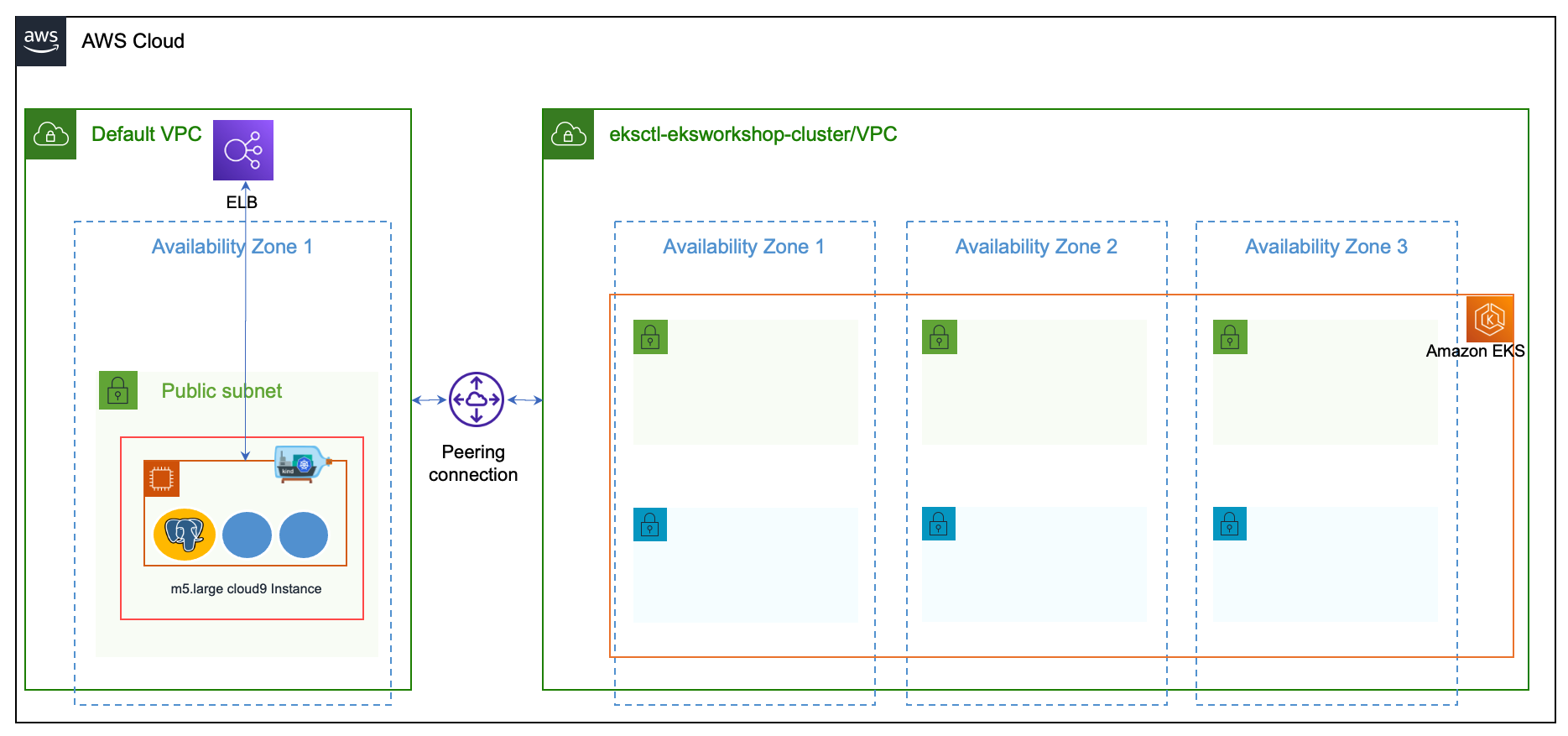Configure EKS cluster
This workshop has been deprecated and archived. The new Amazon EKS Workshop is now available at www.eksworkshop.com.
We created an EKS cluster cluster with a managed node group and OIDC. For Postgres persistent storage we’re going to use a host path for the sake of this workshop but it would be advised to use Amazon Elastic File System (EFS) because it’s a regional storage service. If the Postgres pod moves availability zones data will still be available. If you’d like to do it manually you can follow the EFS workshop here.
To let traffic cross between EKS and Cloud9 we need to create a VPC peering between our Cloud9 instance and our EKS cluster as shown.

export EKS_VPC=$(aws eks describe-cluster \
--name ${CLUSTER} \
--query "cluster.resourcesVpcConfig.vpcId" \
--output text)
export PEERING_ID=$(aws ec2 create-vpc-peering-connection \
--vpc-id $VPC --peer-vpc-id $EKS_VPC \
--query 'VpcPeeringConnection.VpcPeeringConnectionId' \
--output text)
aws ec2 accept-vpc-peering-connection \
--vpc-peering-connection-id $PEERING_ID
aws ec2 modify-vpc-peering-connection-options \
--vpc-peering-connection-id $PEERING_ID \
--requester-peering-connection-options '{"AllowDnsResolutionFromRemoteVpc":true}' \
--accepter-peering-connection-options '{"AllowDnsResolutionFromRemoteVpc":true}'
Finally create routes in both VPCs to route traffic
export CIDR_BLOCK_1=$(aws ec2 describe-vpc-peering-connections \
--query "VpcPeeringConnections[?VpcPeeringConnectionId=='$PEERING_ID'].AccepterVpcInfo.CidrBlock" \
--output text)
export CIDR_BLOCK_2=$(aws ec2 describe-vpc-peering-connections \
--query "VpcPeeringConnections[?VpcPeeringConnectionId=='$PEERING_ID'].RequesterVpcInfo.CidrBlock" \
--output text)
export EKS_RT=$(aws cloudformation list-stack-resources \
--query "StackResourceSummaries[?LogicalResourceId=='PublicRouteTable'].PhysicalResourceId" \
--stack-name eksctl-${CLUSTER}-cluster \
--output text)
export RT=$(aws ec2 describe-route-tables \
--filter "Name=vpc-id,Values=${VPC}" \
--query 'RouteTables[0].RouteTableId' \
--output text)
aws ec2 create-route \
--route-table-id $EKS_RT \
--destination-cidr-block $CIDR_BLOCK_2 \
--vpc-peering-connection-id $PEERING_ID
aws ec2 create-route \
--route-table-id $RT \
--destination-cidr-block $CIDR_BLOCK_1 \
--vpc-peering-connection-id $PEERING_ID
Now that traffic will route between our clusters we can deploy our application to the EKS cluster.